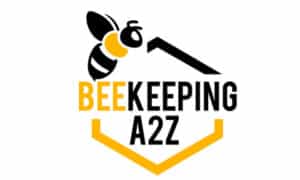Bees fly nearly 55,000 miles, to supply just a pound of honey. A single colony of bees could produce about 800kg of honey at its most productive, almost a ton! One bee colony doesn’t produce just a bottle of honey.
A prolific hive is supposed to yield 50 to 80 pounds of honey, and that’s just a few eight ounces of jar. Over the years, the Queen will create between 100,000 and 200,000 bees, each of which will collect nectar over 10 to 20 days.
Remember, the first year of a hive keeping is still about building up. Therefore, the bees may or may not produce a lot. So, don’t take an excessive amount of honey out of them. Otherwise, you risk starving your bees.
Hive Management
There can only be between 10 and 20 kilograms of honey in the hive at any given time. Hives aren’t the size of warehouses. So, to keep all this honey, the bees continuously use it as fuel, mainly to keep the brood warm. It is essential to have the right equipment when you’re ready to harvest honey from your hive to do it effectively without wasting excess honey. Consider investing in a honey extractor that makes the extraction process faster and keeps the honeycombs in the frame so that your bees can use them again.
Factors Affecting Honey Production
Several factors determine how much honey a beehive produces each year—weather conditions, hive location, disease, pests, and bee robbing.
Weather Conditions
The temperature and quantity of rain ascertain how often bees depart the hive for foraging. Bees are no longer inclined to leave their hives if there is too much wind. This factor also applies when it rains. Bees have more time to forage for pollen and nectar in warmer temperatures.
Location of Hive
It’s essential to think about the hive’s location and whether there is ample flowering vegetation to aid your hive’s honey production plans. Essentially bees need access to nectar and pollen to make honey. Forager bees fly up to a distance of five miles to find nectar.
Diseases and Pests
Diseases and parasites are a significant risk to a hive where varroa mites are perhaps among the most dangerous threats to bees. Said bug would attach to bees and suck their blood, which will kill off a whole colony. Nosema, wax moth, and foulbrood are other diseases and pests that also pose risks to a hive. Infected hives will be under a lot of stress, which would result in less honey production.
Bee Robbing
At times, acolony of bees will enter the hives of another colony. They will steal away honey from the other bees, resulting in aggression and even lead to a rift between the two hives. It will cause honey production to dwindle as worker bees fight to protect their Queen and their food.
Common questions on the quantity of jars of honey a beekeeper can get from a hive
Why Do Bees Make Honey?
Bees make honey to have food to live in the Winter. Unlike other insects, bees do not hibernate throughout the Winter. Instead, they created a cluster around their Queen to defend her and keep heat. They shake their bodies to emit heat, and that movement requires a lot of energy. Bees feed on the honey they stored for the duration of the warmer season to survive the Winter.
How Many Hives Should Honey Farmers Start With?
It can be intimidating to keep more than one hive. Still, it is encouraged that a beekeeper usually begins with two hives since you can evaluate each other’s behavior and patterns. It is an excellent way to learn about the usual honey bee behavior. You’ll be able to identify any abnormal behavior that needs to be acted upon as well.
Moreover, it’s basically to balance the two hives by adding bees to the weaker hive.
Each hive has a unique scent that bees can interpret. Bees are inclined to hold onto themselves so that they won’t bother each other. You may keep two hives a few inches apart to make it simpler for you during routine inspections. Try to hold the hives at least eight inches away from each other. You not only learn about honey bees fast, but you also harvest double the honey by maintaining two hives.
How many Honey Bees Need to Survive Winter?
Robust honey will produce about two to three times more honey than they need. Thus, it’s vital that a beekeeper does not harvest all of the honey, but only a portion. The beekeeper will need to modify how many to be collected for personal use if a hive is not healthy.
The quantity of honey that can be harvested relies upon the severity of the winter season. Bees can survive on about 40 pounds (18 kg) of honey if the Winter is less harsh. Bees may need a lot more honey, up to 90 pounds (40 kg) during a severe winter.
There are no specific means to forecast how much honey your hive will need. Thus, it’s proper to be conservative and keep more honey than needed. Otherwise, beekeepers will need to feed with sugar syrup to supplement the hive’s lack of food. Besides, many beekeepers choose to harvest honey in the early spring instead of the fall, so their bees have all the time they need to make more honey in the coming warm months.
Conclusion
Each hive of bees can produce a great deal of honey, relying on geographic location, weather, temperature, pests, and flora. Individual hives can produce more enormous quantities under ideal management conditions.

